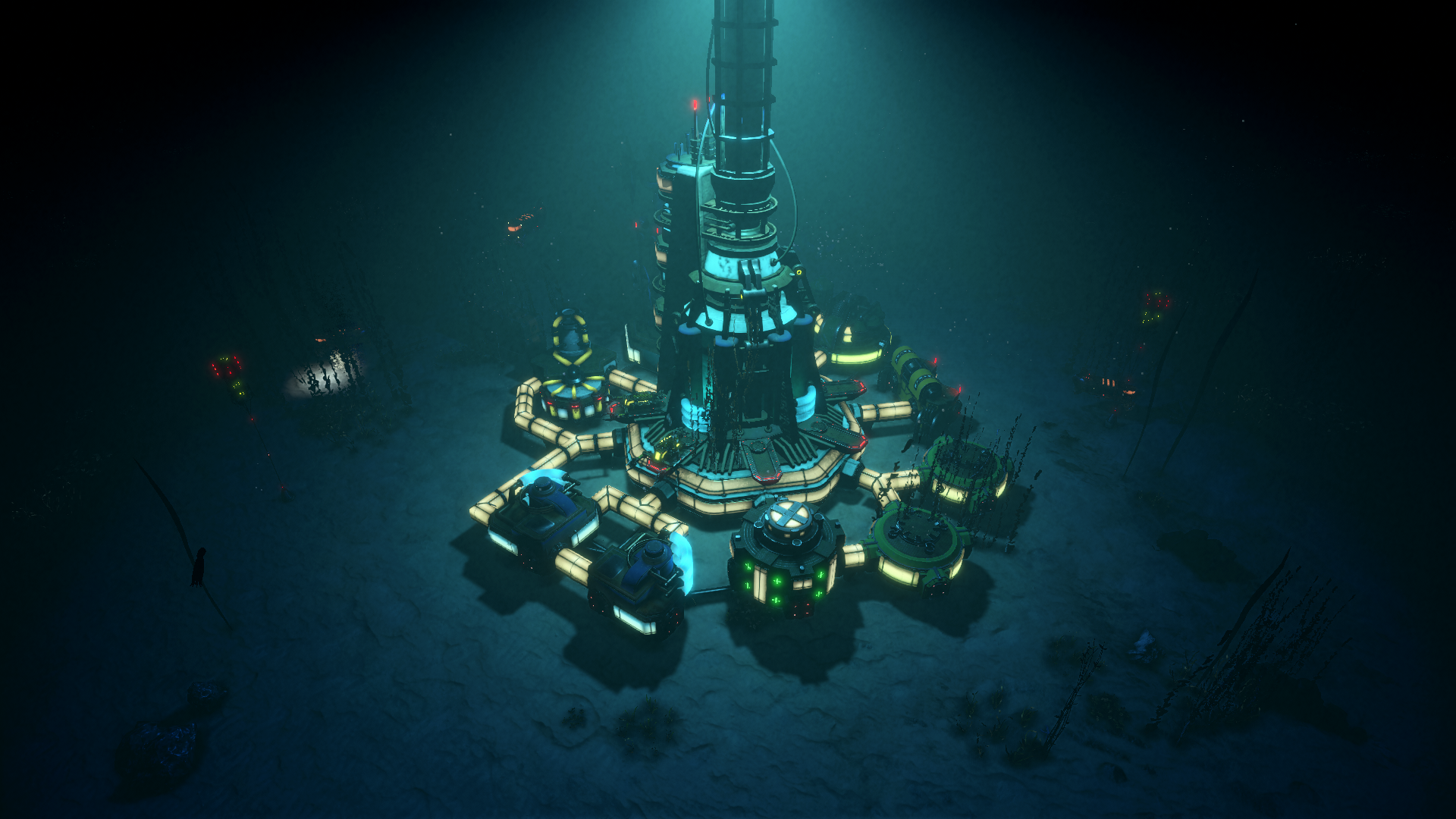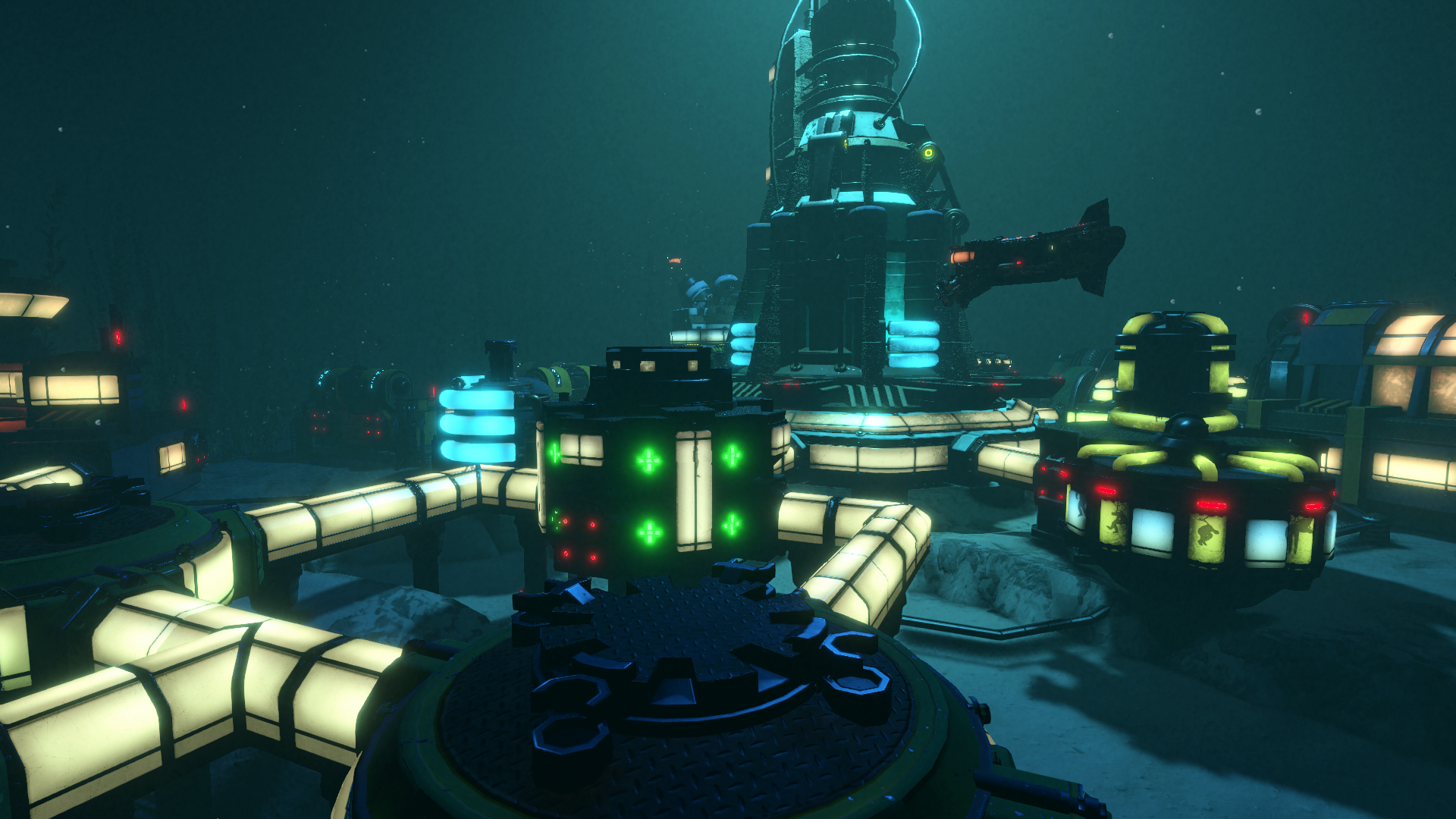Last week, we introduced Surviving the Abyss. Today we’re going to talk a little bit more about the premise, setting, and basic building blocks of the game. We’ll cover the game’s systems in more detail in future developer blogs regularly between now and the Steam Early Access release on January 17, give us a follow and you'll be notified of new dev blogs!
Premise
At the height of the Cold War, scientific progress was booming. Since the discovery of DNA and its structure, many governments have attempted to experiment with this newfound knowledge. Human cloning was the next frontier in the field. However, due to public outcry, this research was to be continued in secret, deep below the ocean where new, undocumented genetic material can be found.This is where you come in, Overseer. You will be in charge of a new cloning and research facility. No one can know of its existence, but the project is of the utmost importance.
The role of Overseer comes with the responsibility of leading an ever-growing population of the crew, all working to realise the goal of human cloning and genetic editing through the capturing of rare deep-sea wildlife, discovery of resources, and expansion of infrastructure. However, heavy is the head that wears the crown; your judgment and decisions will be felt by the crew operating under your command, while you remain in the safety of the central hub’s tower.

As many leaders learn, a grip on power is rarely as tight as it may seem. The Overseer must provide for the crew and settle their moral dilemmas, having to reconcile their personal ethics with the reality of the situation on the research base, while being careful not to turn the crew against them.
Why an underwater city builder?
Our team here at Rocket Flair are incredibly excited to be working on a title set in the deep-sea. There’s more than a few wannabe marine biologists on the team, and it’s a very interesting challenge to bring the city-building genre under the waves.The setting, being deep below the ocean, has influenced our game design, art, and audio immensely. From the pitch-black darkness that surrounds the base to the critical management of breathable air and need for tunnels, the ocean floor setting has had a powerful influence on the game's direction.

The beginning
Your primary mission is to carry out genetic experiments deep below the ocean’s surface, away from the prying eyes of the public and other nations. But before research can begin in earnest, the overseer must establish necessary survival infrastructure.The game starts within a dimly lit area, where you are provided a small supply of the basic building materials and fuel to power the generators. Beyond this meagre supply, you are forced to explore the landscape outside the safety of your central hub; into the dark, unknown.
When the infrastructure has been established and the basic necessities of the crew have been met, the overseer is then tasked with building up the research facility through the missions given from above the surface. But operating in the deep sea is no simple feat, and you will need to maintain the perfect balance between completing your objectives and surviving.

Surviving in the Abyss
Humans were never meant to live underwater, and Surviving the Abyss will have players persevering through the most unforgiving environment on Earth - the deep ocean. You will need to find a way to survive without natural sunlight and a lack of oxygen, along with the threats that may be lurking in the darkness.Oxygen, Power, and Food will need to be in a steady supply to maintain the health of your crew and keep the base of operations running smoothly.
The ocean is the darkest place on Earth, so to find the necessary resources to expand your base and explore the environment, you will need to light up your surroundings by building resource-intensive light towers, which can put an immense strain on your power systems as you expand.
Additionally, your crew’s movement through the environment is limited. The crushing pressure and lack of oxygen forces the crew to stay inside, limiting their movement to a network of player-constructed tunnels and submarines.

Air and Food Quality will have a direct impact on the health of your crew. Overloading your oxygen networks with industrial buildings can cause dangerous pollutants to enter the network. Lower quality food can be manufactured en masse, but will harm the crew over time. Sourcing better food sources can put further pressure on the power grid, however, so there is a balance to be maintained.
These survival elements will challenge players, as they try to complete their mission and realise the full potential of their scientific endeavour.

Changed files in this update